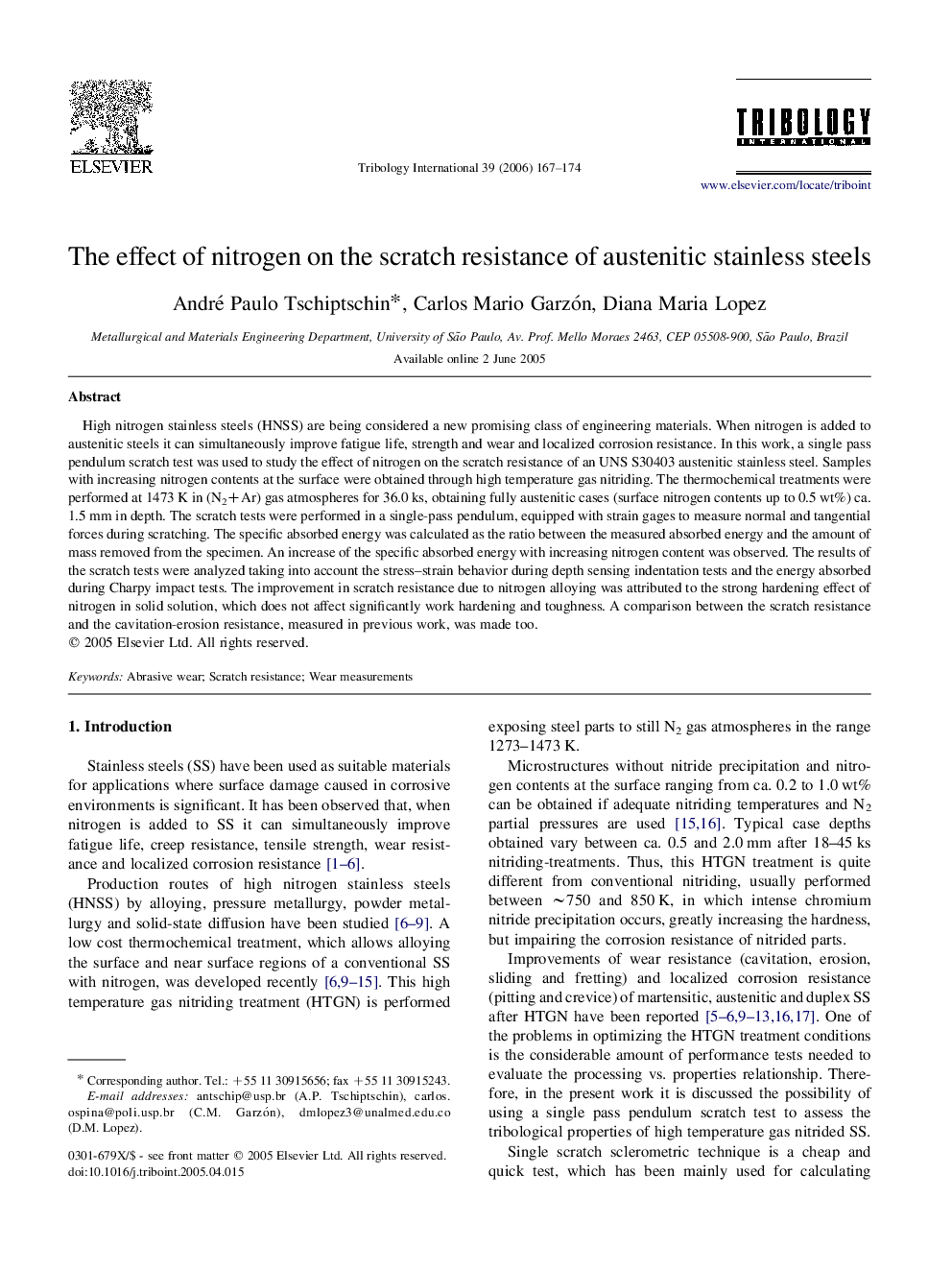| Article ID | Journal | Published Year | Pages | File Type |
|---|---|---|---|---|
| 616845 | Tribology International | 2006 | 8 Pages |
High nitrogen stainless steels (HNSS) are being considered a new promising class of engineering materials. When nitrogen is added to austenitic steels it can simultaneously improve fatigue life, strength and wear and localized corrosion resistance. In this work, a single pass pendulum scratch test was used to study the effect of nitrogen on the scratch resistance of an UNS S30403 austenitic stainless steel. Samples with increasing nitrogen contents at the surface were obtained through high temperature gas nitriding. The thermochemical treatments were performed at 1473 K in (N2+Ar) gas atmospheres for 36.0 ks, obtaining fully austenitic cases (surface nitrogen contents up to 0.5 wt%) ca. 1.5 mm in depth. The scratch tests were performed in a single-pass pendulum, equipped with strain gages to measure normal and tangential forces during scratching. The specific absorbed energy was calculated as the ratio between the measured absorbed energy and the amount of mass removed from the specimen. An increase of the specific absorbed energy with increasing nitrogen content was observed. The results of the scratch tests were analyzed taking into account the stress–strain behavior during depth sensing indentation tests and the energy absorbed during Charpy impact tests. The improvement in scratch resistance due to nitrogen alloying was attributed to the strong hardening effect of nitrogen in solid solution, which does not affect significantly work hardening and toughness. A comparison between the scratch resistance and the cavitation-erosion resistance, measured in previous work, was made too.
